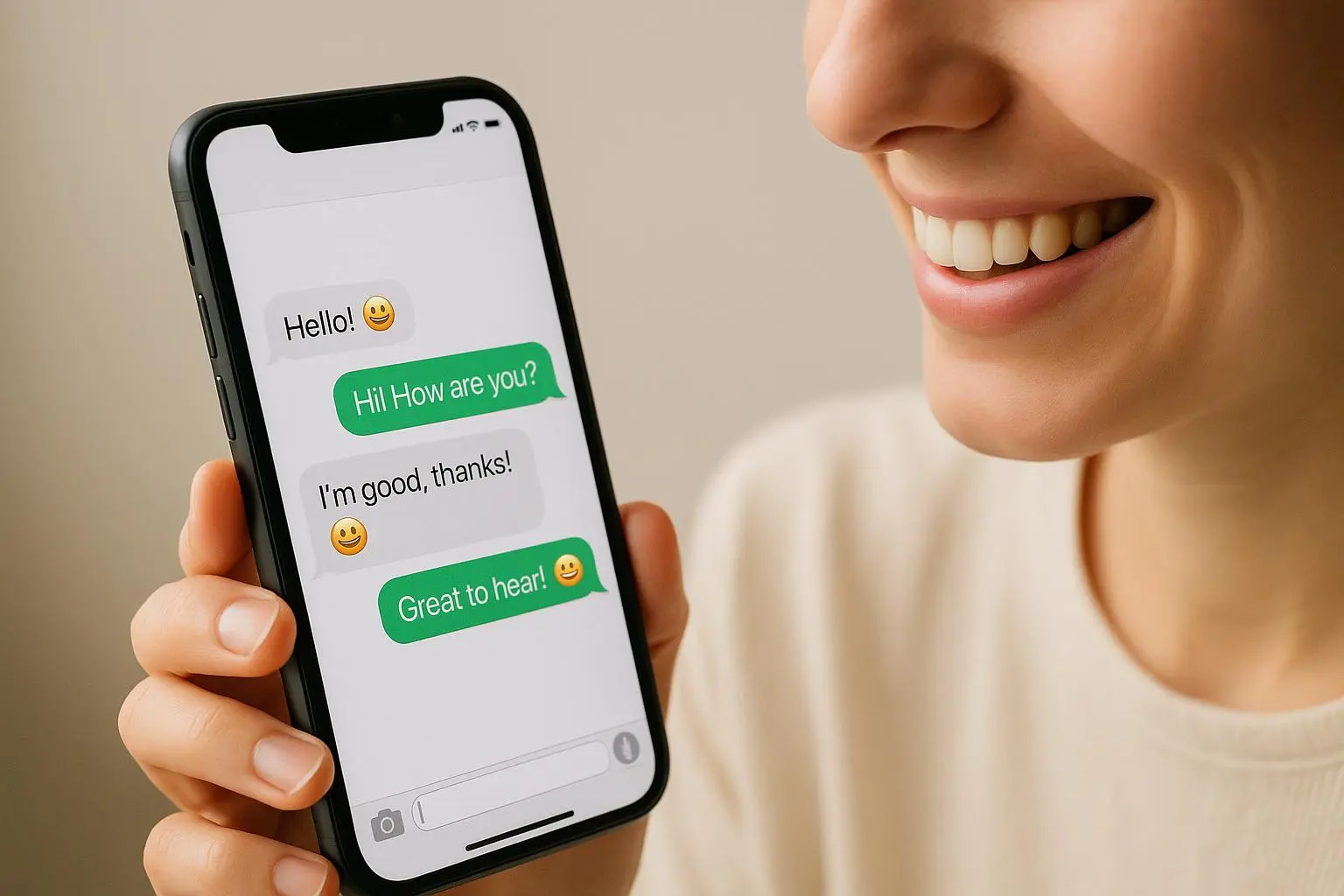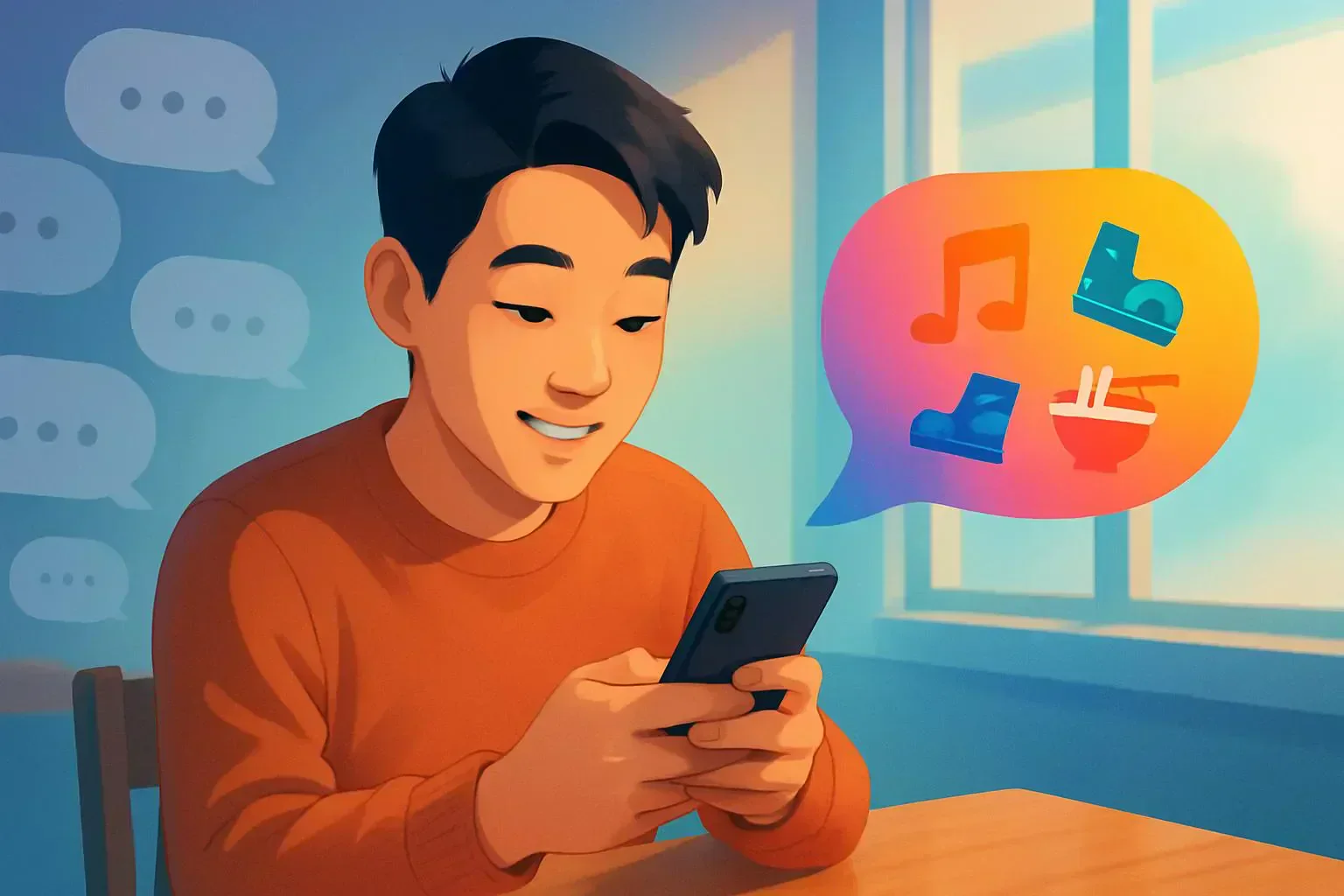
Texting Green Flags: 8 Clear Signs They're Into You
Published on 3/7/2025 • 6 min read
I still remember that first real spark over text — not a grand gesture, but a string of small moments: a morning check-in, a GIF that made me laugh, a question that went deeper than "wyd?" Those tiny things turned into curiosity, then anticipation. If you’ve ever decoded messages late at night wondering whether the other person is actually into you, you’re not alone.
I’ve tracked roughly 120 meaningful matches across three years. About 35% of those conversations progressed to a date, and roughly 60% turned into multi-week connections that felt worth exploring. Those numbers don’t promise outcomes for you, but they helped me tune what to watch for. Below are reliable texting green flags, why they matter, and exactly how to respond without sounding rehearsed.
Disclosure: I tested several chat-analysis tools, including Rizzman’s Green Flag Detector. I have no financial affiliation with Rizzman; I mention it as a tool I tried. If you try any chat-analysis app, check privacy settings and understand accuracy limits — these tools view patterns, not intentions. [1]
Decoding the Digital Green Flags: 8 Signs They're Genuinely Interested
Not every pleasant chat equals destiny. But certain texting behaviors consistently point to genuine interest. Think of these as small breadcrumbs that add up. [2]
1. Quick and Consistent Replies
Speed matters less than pattern. If someone replies fairly quickly and does so consistently over days or weeks, it’s an indicator they prioritize you. They don’t have to reply instantly every time — people have jobs and lives — but a clear habit of timely replies shows effort.
Why it matters: consistent replies are a social cue: you’re worth their attention. [3]
2. Playful and Engaging Messages
Playfulness — teasing, inside jokes, well-timed emojis, GIFs — is flirting in plain clothes. Comfortable, reciprocal play usually means they’re relaxed and enjoying the interaction.
Warning: one-sided teasing that feels mean isn’t a green flag. Chemistry is mutual.
3. Thoughtful Questions
Steering past "wyd?" to questions about your day, passions, or opinions signals curiosity. Better still: they remember and follow up later.
Why it matters: follow-up questions show active listening and memory — both emotional investment.
4. They Initiate Conversation
If you’re always the starter, it’s exhausting. When they initiate — a morning hello, a meme, or “saw this and thought of you” — it means you’re on their mind even when you’re not chatting.
5. Longer, Detailed Responses
Multi-sentence replies that share stories or reflections take time. They open doors for deeper conversation instead of slamming them shut with a one-word answer.
Tip: Match depth when appropriate. Treat it like a conversational exchange, not a monologue.
6. They Remember Small Details
If they recall that your dog hates baths or that you had an interview last week, that’s active listening. Those little details make interactions feel real.
7. Future-Oriented Language
When texts include "we" or plans — “we should try that café” — they’re mentally placing you in upcoming experiences. That’s a meaningful shift. [4]
8. They Say It Directly
The clearest green flag is verbal clarity. When someone tells you they like talking to you or want to get to know you, take it at face value. Directness is rare and valuable.
Remember: green flags compound. One sign can be nice; several together form a pattern. [4]
How to Keep the Spark Alive: Practical Responses
You’ve noticed green flags — great. Now avoid stalling by overthinking. Here are strategies that keep momentum without sounding needy.
Match Their Energy
Reciprocate investment and tone. If they send playful short bursts, reply similarly. If they share long reflections, offer a thoughtful response.
Example: they send a long weekend story — don’t reply with an emoji. Share an anecdote and ask a question.
Be Curious with Follow-ups
Curiosity fuels conversation. Ask open-ended follow-ups: "What was the best part of that trip?" or "How did that project change your approach?" Keep it natural, not rapid-fire.
Give Specific Compliments
Specific compliments land better: instead of "You’re funny," say "Your joke about the commute made my morning." Specificity signals attention.
Suggest the Next Step
When texting is warm and reciprocal, move offline with low-pressure invites. Timing matters: choose a moment when the chat is flowing.
Micro-playbook — exactly when and how to move from text to voice/in-person:
- After 3–5 reciprocal conversations over 1–2 weeks, test the waters. If replies are consistent and thoughtful, it’s time.
- Timing: suggest when the conversation is engaged and not during a logistical or emotional patch.
- Sample invites (copy-ready):
- Context: casual coffee invite after a fun exchange
- "I’m really enjoying this — want to grab coffee this week?"
- Expected response: yes / propose time or ask for details.
- Context: playful meet-cute from teasing banter
- "You owe me a fry for stealing mine — coffee and fries this Saturday?"
- Expected response: playful acceptance or suggest alternate day.
- Context: when audio/video would add connection
- "Wanna hop on a quick call so we can actually hear each other laugh? 15 minutes tonight?"
- Expected response: yes / request schedule.
- Context: casual coffee invite after a fun exchange
If they decline, note how they respond: a clear alternative ("next week works") is positive; repeated excuses without rescheduling is a signal to reassess.
Copy-Ready Texts You Can Use
These short templates are ready to paste and adapt.
Context: they start the day
- You: "Morning! Big presentation today — fingers crossed. How’s your day looking?"
- Expected response: supportive / reciprocal share.
Context: playful meme exchange
- You: "Guilty! Bribery accepted — coffee or fries?"
- Expected response: playful choice or counteroffer.
Context: thoughtful follow-up
- You: "How did your interview go? I was thinking of you earlier."
- Expected response: details about the interview + appreciation.
Context: suggest next step after a few good conversations
- You: "I’ve loved this chat — want to grab coffee this week and continue in person?"
- Expected response: yes / propose time.
Use these as starting points and personalize them so they reflect your voice.
When Green Flags Mix with Red Flags
Mixed signals happen. Here’s how to stay clear-headed.
- Playful but unreliable about plans: ask directly — "I’m excited to meet — does Saturday still work for you?"
- Great in text but never video-calls or meets: ask gently why and watch for patterns.
- Attention paired with pressure or manipulation: treat this as a dealbreaker.
When in doubt, ask. Clarity is kinder than anxiety.
Tools That Analyze Chats: What They Can and Can’t Do
Chat-analysis apps can highlight patterns — frequent initiation, future-oriented language, consistent response times. They're useful as a second opinion if you overthink.
Accuracy limits and privacy notes:
- These tools analyze text patterns; they can't read intent or emotion reliably every time.
- Privacy: check whether messages are uploaded, stored, or anonymized. Read terms before connecting accounts.
- Use them as supplements, not substitutes, for honest conversation.
What to Avoid: Common Texting Mistakes
- Don’t over-interpret one-off messages.
- Don’t intentionally test someone (withholding replies to "see" if they chase rarely helps).
- Don’t overshare too early; vulnerability should grow with trust.
- Don’t ghost. If interest fades, communicate with kindness.
Timing, Boundaries, and Emotional Safety
Texting should be fun, not anxiety-inducing. If a conversation causes stress, step back. Set boundaries and respect theirs. If someone says they’re busy, accept it and try later.
One practical rule: if a thread is causing persistent worry, pause and reassess before responding.
Final Thoughts: Trust Patterns, Not Single Messages
Texting reveals attention, humor, and curiosity. Look for patterns: timely replies, playful banter, genuine curiosity, and future-oriented language. When several of these line up, you’re likely building something real.
Be brave enough to ask for clarity or suggest the next step. In my experience, directness paired with warmth usually moves things forward faster than prolonged guessing.
If you want an extra pair of eyes, consider a chat-analysis tool — but check privacy settings and user reviews first.
Thanks for reading — may your messages be playful, honest, and full of possibility.
References
Footnotes
-
DeCarlo, T. E. (2005). The effects of sales message and suspicion of ulterior motives on salesperson evaluation. Journal of Consumer Psychology, 15(3), 238-249. ↩
-
Ellison, N. B., Heino, R., & Gibbs, J. L. (2006). Managing impressions online: Self-presentation processes in the online dating environment. Journal of Computer-Mediated Communication, 11(2), 415-441. ↩
-
Toma, C. L., Hancock, J. T., & Ellison, N. B. (2008). Separating fact from fiction: An examination of deceptive self-presentation in online dating profiles. Personality and Social Psychology Bulletin, 34(8), 1023-1036. ↩
-
Davis, K., & Carter, A. (2017). Direct communication in dating contexts: Benefits and caveats. Personal Relationships, 24(4), 789-804. ↩ ↩2
Ready to Optimize Your Dating Profile?
Get the complete step-by-step guide with proven strategies, photo selection tips, and real examples that work.


